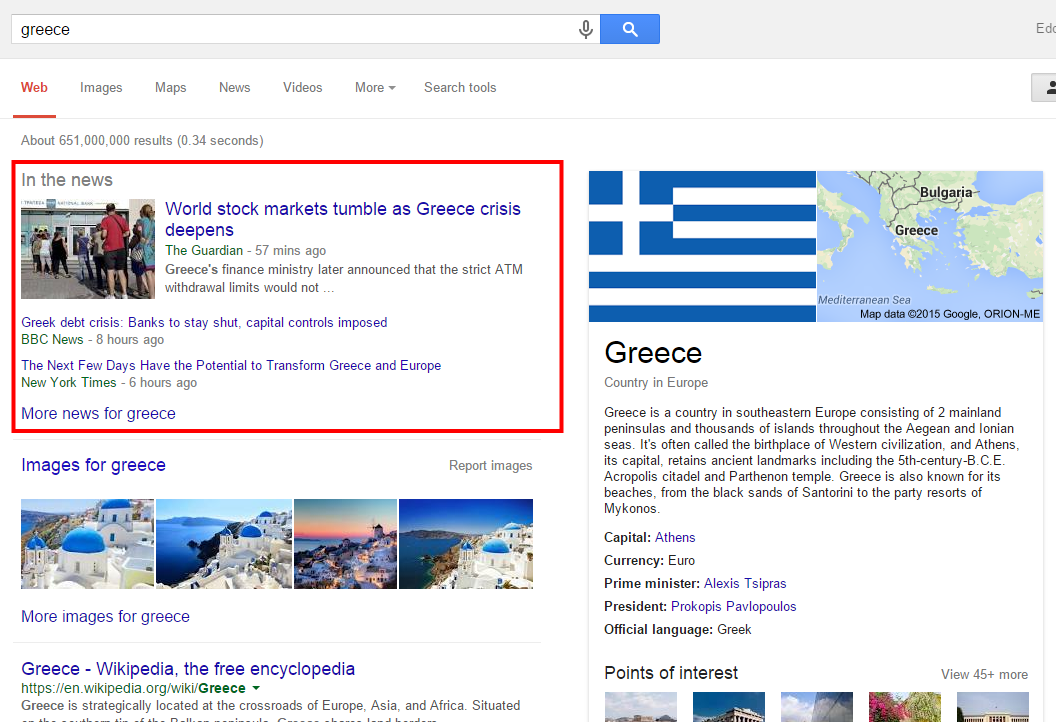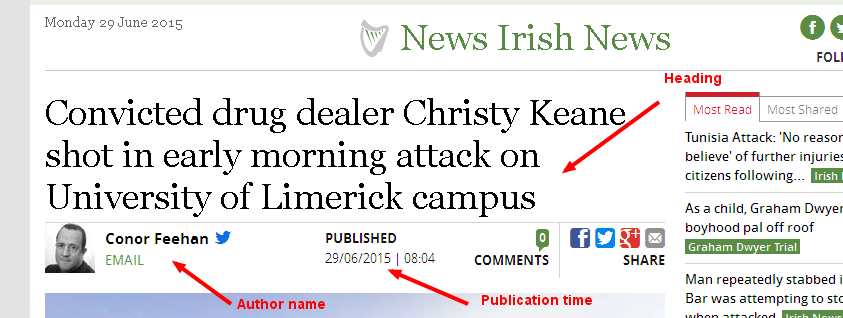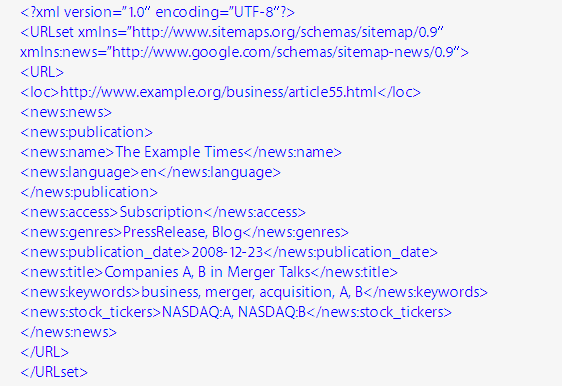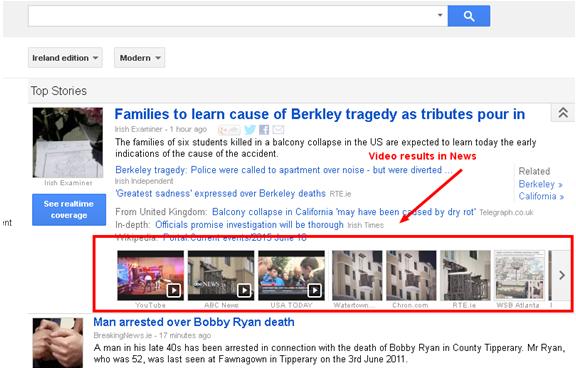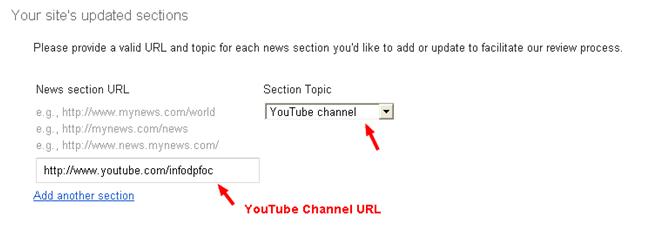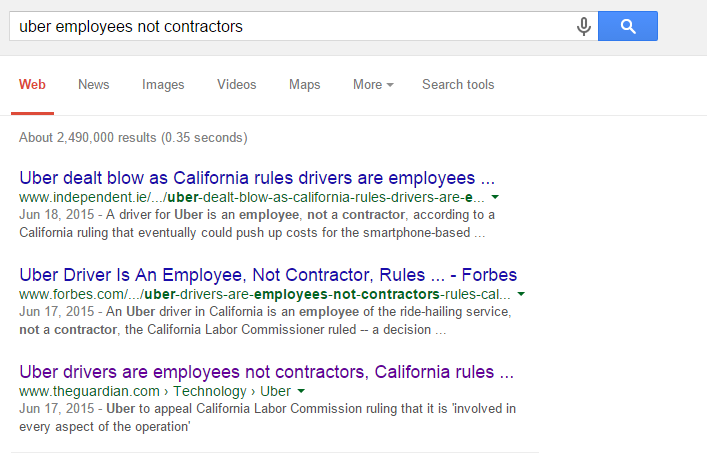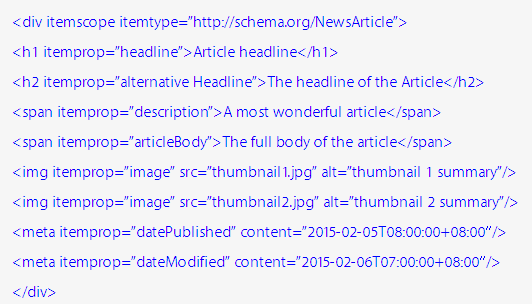What Is Google News?
Google News is Google’s free news aggregation website. It allows users to browse news articles from a diverse range of news websites in a single interface. Users can click through from Google News to any article that interests them.
Publishers benefit from having their content included in Google News as it can drive traffic to their website directly from Google News but also from regular search results. Google will include articles from Google News in regular search results if they deem the article to be relevant to the user’s search query.
A search for “Greece” returns 3 time sensitive articles from Google News at the top of the SERP
When determining what articles to display in regular search results, Google will consider factors such as the freshness of the content, whether it offers a unique perspective on the news item, its relevance to the search query, and the location of the publisher as well as other factors.
Google News Publisher Center
What is it?
Google News Publisher Center is a free tool offered by Google to publishers of news websites to in the first instance facilitate them to request inclusion of their content in Google News. Furthermore, the tool enables news publishers to provide more accurate information to Google about their news content with a view to gaining greater exposure on the search engine. For more on this, see the relevant Google literature here.
How the Google News Publisher Center Works
To use the Google News Publisher Center, you must first verify ownership of your news source using Google Webmaster Tools. The Publisher Center will then list all the news sources that you own, and you can update section or source information if either is outdated.
Preparing for Submission – Technical Guidelines
In order to appear in Google News, publishers must request inclusion of their website within the Google News Publisher Center. However, before making the inclusion request, there are a number of guidelines with which publishers should be familiar. Google News uses a computer algorithm to automatically crawl news sites. To help Google determine which web pages are actually articles, your site should follow Google’sTechnical Guidelines.
- Article URLs
To make sure that the Google News bot only crawl news articles, make sure your URLs are unique with at least 3 digits, and are permanent.
www.domain.com/category/sports/sachin-creats-history-12.hmtl is not a valid URL, but www.domain.com/category/sports/sachin-creats-history-121232.html or, www.domain.com/category/sports/sachin-creats-history-546.html is valid URLs for inclusion in Google News.
Some other examples of acceptable URLs are listed below (Numbers Highlighted in Red):
http://www.rte.ie/sport/rugby/six-nations/2013/0314/376604-ireland-set-to-name-team-for-italy-at-lunchtime/
http://www.reuters.com/article/2013/03/14/us-eu-summit-idUSBRE92D0MK20130314
However, if you are using News Sitemaps, this rule can be waived. We will discuss News Sitemaps later in this post but a live example for this is www.guardian.co.uk/ . They are not using the unique three digit structure (date doesn’t count) in their URLs, for example: http://www.guardian.co.uk/media/2013/mar/14/leveson-talks-break-differences-parties There is no uniquethree digit in the URL, but as they are using news sitemap, they are listed in Google News. Here is the news sitemap for the website: http://www.guardian.co.uk/newssitemap.xml .
- Main Body of Article Should be in HTML
Page content should be easily accessible by Google crawlers and the main text(body) should not be embedded in JavaScript or non crawlable scripts; the pages should be in html. In order to provide the best user experience and accuracy of news, the articles’ headlines and publication time should be easily identifiable to the automated crawler; below is a snapshot for the same:
- Permanent Section URLs
A section URL represents a section/category page of a news website which will list all news articles related to the particular category. For example, for sports news, the URL of the section/category could be www.domain.com/category/sports, which will list articles related to sports. Your section URLs should not be changing frequently and Google has clearly mentioned that if this happens, they would not be able to include the website in Google news (more info. read here). If after your site has been accepted into Google News, your main news sections change, update Google records of your section URLs within the Google News Publisher Center.
- Languages and Encoding
Your website should display articles/content in a single language. If you want to display content in multiple languages on the same page (URL), Google’s crawlers will find it difficult to crawl content and thus, your content will not rank well. If you offer content in different languages, you need to submit your website for each language version of the website. Also, Unicode Transformation Format format of the webpage should be UTF-8.
Tip: To check the UTF version of the website look for the below tag in the source of the webpage:
<meta http-equiv=”Content-Type” content=”text/html; charset=utf-8″>
- Article Links
Googlebot-News is best able to crawl HTML links and is unable to crawl image links or links embedded in JavaScript. Make sure that your articles on your section pages only have HTML links.
- Article Formatting
Google’s crawler is only able to include HTML articles. This means they cannot crawl PDFs or other non-HTML formats.
- Robots.txt or Meta Tags
Your content/pages/articles should be accessible easily; i.e robots Meta tag or robots.txt should not be blocking any page or URL which you want to rank in Google’s search results. This recommendation is not limited to a news website; it is applicable to any website trying to rank on Google.
- User-Friendly
Websites should load quickly and use URL redirects rarely and avoid behavior intended to trick users.
- Proper use of Meta Tags
Use keywords tag and standout tag correctly.
- Redirects To Different Domains
Your content must reside on the same domain, i.e. redirects to different domain upon clicking the story title will not be followed by Google’s crawlers; this is the reason why news aggregator websites cannot be listed in Google News. That being said, you can place redirects on the same domain/sub-domain. For example in case any URL has been changed, you can update Google within the Google News Publisher Center.
- Understanding Your Website Subscription Model
See: https://support.google.com/news/publisher/answer/40543?hl=en
There are certain news websites which will ask for the subscription/signup before users can read the actual articles, and as per Google’s general guidelines (not limited to news), any content hidden behind login forms or Paywall, is not crawlable and thus, Google will not include the content in search results. For subscription/registration sites, Google offers three approaches as explained below. Before you submit your website in Google News Publisher Center, you should know which model your website is employing and the implications of same.
1. First Click Free
As the name suggests, the first click from Google News will be free, i.e. users will be able to read the entire article without signing up and subscribing to the website. Thus, both users and news publishers will benefit. Publishers get new readers and readers get to access one article free of charge. Sounds great but if the user has to register in order to access any further article, how is Google going to access that content?
The basic idea is that your site must allow referrals coming from any Google domain or sub domain to hop over your subscription page. There are a lot of different URLs they could come from, so include any top-level domain matching http://*.google.*
This might look like “Cloaking” as website content will be served in accordance with user-agent detection but Google has allowed publishers to freely practice this.
Google on “First Click Free” :
In order to participate in “First Click Free” program, you need to follow below guidelines:
A user coming from the domain [*.google.*] must be able to see a minimum of 5 articles per day. This practice is termed as “metering” the user as when they clicked on more than 5 news items of a particular website listed in Google News, then the meter for freely accessible news items on that website gets exhausted for that user. Further, if websites meter access on a weekly or monthly basis, then also publishers are bound to show a minimum of 5 articles per day to users. If a website fails to fulfill this condition, then Google will consider it as a subscription website.
The page displayed to users who visited the article from Google must be identical to the content that is shown to the Googlebot, i.e. you should show the complete article content to the users when they follow a link from Google.
Your Robots.txt/ Meta tags should allow Googlebot to access all the articles.
Practical Example of “First Click Free”: Wall Street Journal is the best suited example for this, see below snapshot:
After following the link on “Google News”, readers are allowed to browse 4 other articles (5 in total) and then, they need to subscribe to the website in order to read any further.
Additional Info: “First Click Free” was originated from Google News, but now you can use this for general web results as well. Read Google’s official guidelines on using “First Click Free” for web results here.
2. Subscription Websites: Snippet Only
If publishers are not comfortable with the “First Click Free” option, and the user has to subscribe or pay in order to read the news, Google will display the “Subscription” tag next to the publication name which will guide the user that this site will ask for the signup/subscription in order to access all (or most) of the articles, see below snapshot for the same:
If a publisher chooses to go with this option, they need to display a snippet of the article which should have at least 80 words and should include a brief summary of the article. Since Google does not permit cloaking, i.e showing Googlebot a full version of the article while showing users the snippet of the article with subscription details, Google will crawl and display your content based on the article snippet provided. Though Google further says that you can cloak for Googlebot-News, i.e you can show Google News the full article, but you cannot cloak for Googlebot.
If you currently cloak for Googlebot-news but not for Googlebot, you do not need to make any changes; Google News crawls with Googlebot and automatically uses the 80-word snippet.
If you cloak for Googlebot-News, Google News will be able to access your content.
If you cloak for Googlebot, Google News and Web Search will be able to access your content.
Our recommendation is not to cloak, neither for Googlebot, nor for Googlebot-News.
Thus you should not cloak for “Googlebot” and Google also warns publishers that if you are using cloaking for Googlebot, which will show the full version of your article to Googlebot, while showing users the snippet of the article with subscription requirement, your site may be subject to Google Webmaster penalties. Please review Webmaster Guidelines to learn about best practices.
3. Robots.txt
Lastly, you can use your robots.txt to prevent Google crawling and indexing your subscription only content. You can place freely available content in one section and subscription only content in another and disallow the section which you don’t want to be crawled. Google explained the usage of Robots.txt file here.
Google News Sitemap
Google highly recommends that you submit a Google News Sitemap through a Webmaster Tools account. By creating and submitting a Google news sitemap, you help Google News bot to discover and crawl your site’s news articles. News sitemaps differ from normal XML sitemaps and thus sitemap generators cannot be used to generate a news sitemap.
In addition to the normal properties of sitemap files, Google News Sitemaps allow publishers to describe the types of content they publish, along with specifying levels of access for individual articles. News sitemaps contain some additional information like:
<news:genres> : This will define the access level. For example, if the article is subscription only or requires registration. Omitting this tag in sitemap for any article means that the full article is accessible to every user for at least 30 days.
<news:publication_date>: This tag will define the publication date of the article.
<news:keywords>: This tag will help you in classifying the articles. Browse list of Google’s suggested keywords here.
Visit this page for more information on news sitemap structure. Keep the below in mind while generating a news sitemap:
News Sitemap should contain only URLs of articles published in the last two days.
Update the News Sitemap continually with fresh articles as they’re published. Google News crawls News Sitemaps as often as it crawls the rest of your site.
A News Sitemap can contain no more than 1,000 URLs. If you want to include more URLs, consider breaking these URLs into multiple Sitemaps, and use a sitemap index file to manage them.
Do not create a new News Sitemap each time you publish new articles on your website. Instead, update the current sitemap with the new article URLs.
Here is an example of a News Sitemap entry using News-specific tags:
After creating the News sitemap, upload it to the highest-level directory that contains the news articles. Please see this page for further instructions on submitting your sitemap.
- Multimedia Content
Google is currently unable to include audio files or multimedia content; however, they can sometimes crawl supplementary text on pages with this type of content and do include some videos from YouTube. Below is a snapshot for video results in Google News:
While Google crawlers can crawl YouTube videos embedded within the news articles, Google wants publishers to submit videos by creating a YouTube Channel and then sharing the same with Google news. As articles and text based submissions need to abide by rules and regulations, your video content should follow some guidelines before submitting the YouTube Channel in Google News. Make sure that you are not violating any of the guidelines of Google.
Steps for getting your video content included
Set-up a YouTube channel
Once you set up a YouTube channel, upload your news videos in it as soon as you have them ready. Provide a descriptive title followed by a short description of the videos. You may want to familiarize yourself with other video optimization strategies and review the resources available at the YouTube’s Creator Playbook.
Let the Google team know
Once you’ve created a YouTube channel, let Google know by reporting an update. Add the URL of your YouTube channel under the section Your publication’s YouTube channel or FeedBurner RSS feed. Make sure you also include your site’s URL, name, id, etc. in this form. The submissions will be reviewed and the Google team will follow up after that. Videos will not be crawled if the website is not already included in Google News.
Join the YouTube Partner Program
Google encourages Google News providers with YouTube channels to apply to the YouTube partner program so that they can get many more benefits out of their video. More details:
https://support.google.com/youtube/answer/72851
If Content Needs to be Removed/Updated
If at any point, the content needs to be edited/removed then Google needs to be updated of the same. To report an update go here and to request some video to be removed, go here.
Once the above issues have been understood and actioned, you are now in a position to submit your site to Google News Publisher Center.
Optimizing Individual Articles / Getting Your Journalists SEO Aware
In order to rank well on Google News, there is no clear set of rules or factors to rank but definitely there are some general guidelines like:
- Freshness of content
- Diversity of content
- Rich textual content
- Originality of content
Of course, when it comes to news, original content and freshness plays an important role in ranking. There are no human editors selecting the news articles or managing the ranking of articles, so all you can do is to make sure that your news website adheres to Google’s guidelines. Some basic on-page optimization techniques like title tags, image alt tags, keyword meta-tags and the basic structure of the news articles do play a vital role. Let’s discuss these one by one.
Title Tags
Make sure the article’s title is in the <title> tag. This tag should be optimized just like you would do for general websites. You can include the category in the title tag along with the brand name.
Example:
<title>Uber drivers are employees not contractors, California rules | Technology | The Guardian</title>
However, if possible, try to keep the title to 70 characters or less as if this is exceeded, Google will truncate the end of the title when displaying in regular search results as below.
The Guardian’s title in purple above is truncated at the end as it has exceeded 70 characters.
Meta description
Search engines like Google often use Meta description as the snippet in their search results pages. Get your journalists to create good and unique descriptions for every news article, as the people who read them will be more likely to click through to your news site. Duplicate description tags (using the same description tags for a number of pages on a website) will negatively affect SEO results and must be avoided.
Example:
<meta name=”description” content=”Uber to appeal California Labor Commission ruling that it is ‘involved in every aspect of the operation’”/>
Heading Tags
Including important keywords in H tags will increase the likelihood of ranking for these keywords.
Keyword Tags
news_keywords meta tag only work for news publishers that are sources in Google News. This tag lets publishers add the most relevant and specific keywords to their news articles. Only 10 keywords for an individual news entry are allowed and equal weightage would be given to all the 10 keywords irrespective of the order in which they have been placed in meta tag.
Syntax: <meta name=”news_keywords” content=”Farming News, Irish Farmers, Farmers”>
Apart from this, make sure that your News Sitemap includes <news:keywords> tag with every news article.
Image Alt Attribute
Search engines do not crawl images themselves but they understand all about the image (what it represents) with the help of the alt attribute. We can use the relevant keywords in the alt attribute without making it look unnatural.
Syntax: <img src=”http://www.example.co.uk/images/7c242-300×180.jpeg ” alt=”Greece’s Yanis”/>
Article URLs
Make sure that the article URL includes those keywords or the post title and category. This is something which does helps a lot, even with general websites. As mentioned previously, you need to have at least three digits in the article URL.
Social Sharing Buttons
To increase the virality of the content, it is important to provide social sharing functionality on all the news articles on the website. This will let readers share the news articles on variety of social channels that they use, which will ultimately be helpful in driving referral traffic to the website. From user’s point of view, it is recommended to place social sharing buttons both on the top and bottom of the article.
Open Graph Meta Tags
Open Graph tags will not only help your articles to be an object on Facebook’s Graph, it will also help you add some additional meta data which will help crawlers to further understand your article’s content, publication date/time. WordPress offers a fantastic plugin for the same and major news publishers like Gaurdian.co.uk is using this plugin in order to implement Facebook open graph Meta tags. If your news website is not built on WordPress, look for similar plugin/extensions for your CMS (Content Management System) and if no luck then take the help of your web developer in adding them manually.
Twitter Cards
Twitter Cards let publishers attach rich photos, videos and media experience to their Tweets which help in driving traffic to their website. Like in below tweet posted by Guardian, it can be seen that along with 140 characters of regular text there is an image embedded with it. This is because they have enabled Twitter cards on their website. For integrating Twitter cards with your CMS (Content Management System) follow Twitter’s guidelines which are explained here.
Author Information
As Google news looks for original and real content, publishers should add author bylines to each article. Separate pages can also be created on the website to display biography, profile image, social media accounts of each author.
Example: On ‘The Washington Post’ news website there is a dedicated page for almost all the authors. This will let readers to follow (can even contact) their favorite authors who write news in the niche they are interested in.
http://www.washingtonpost.com/people/mark-berman
http://www.washingtonpost.com/people/todd-c-frankel
Publication Date and Time
As mentioned above, you need to make sure that news articles are tagged with the date and time of the publication. This will help Google’s crawler to identify the latest news articles on your website. While there are structured metadata standards that allow publishers to associate a specific date and time with a web page or news story, this will help Google to understand the date associated with the publication. Schema.org example:
<a itemprop=”publisher” href=”http://www.guardian.co.uk/” >guardian.co.uk</a>,
<time itemprop=”datePublished” datetime=”2013-03-22T08:48GMT” pubdate>Friday 22 March 2013 08.48 GMT</time>
The best practice is to show the publication time and date near author information at the top of the article. Here, the publication date and time are visible to users and search engine crawlers as per below snapshot:
If you’ve created a Google News Sitemap, the sitemap entry for article is required to have a <publication_date> tag.
Breadcrumbs and Categories
Usage of breadcrumbs will make sure that the categorization is proper. You can also use semantic markup to markup your breadcrumbs. Make sure that the news categories are easily accessible and your news articles should reside under the relevant categories. This will not only help users to navigate through your website, but it will help Google crawlers to categories your news articles properly. See below snapshot for the same:
Highlight Best of Your Work
If you think that you just cracked some breaking news or something which is outstanding, you can highlight that using a tag called “standout” tag. The “standout” tag is meant to give publishers a new way to signal their best content to Google.
Google says“If you put the tag in the HTML header of one of your articles, Google News may show the article with a ‘Featured’ label on the Google News homepage and News Search results”.
The syntax for this tag is as follows:
<link rel=”standout” href=“http://www.example.com/scoop_article_2.html” />
Or, you could use a meta tag:
<meta name=”standout” content=”http://www.example.com/scoop_article_2.html”/>
Exploring News Semantic Markup
Our aim is to provide best information to Google so that our news articles can be crawled easily. Use semantic markup wherever possible; there is a dedicated Microdata structuring for News Publishers which you can use for every article you publish. Google may use the news rich snippet markup in “In the News”.
News Article markup properties:
1. headline (required):Main headline of the news article
2. image (required):Image should be .jpg, .png, or. gif format and size should be at least 160×90 pixels and at most 1920×1080 pixels.
3. datePublished (required): Date and time the news article was first published, in ISO 8601 format.
4. dateModified: Date and time on which the news article was most recently verified, in ISO 8601 format.
5. description: Short description of the news article (approx 80 words)
6. articleBody: The actual body of the article
7. alternativeHeadline: Secondary headline of the news article
Sample code below:
URL Redirects
Avoid unnecessary redirects; although, Google News can follow redirects, use redirects only when there is no other option left. Read more guidelines on URL redirects in Google News here.
Keyword Selection and Research
Home & Category Pages:
Choosing keywords for home and category pages is relatively straight forward. You can utilize the Google Keyword tool to research the highest demand keywords eg for your sports category page, you will want to rank for “sports news” while your political news category will be optimized to rank for “political news”.
Article Pages:
When deciding what keywords to try to rank individual articles for, you typically will not be able to rely on the Google keyword tool as this shows the historic demand for a keyword on Google. For example, if Justin Bieber is charged with a DUI offence, there at the time you are publishing the article will have been no historic demand for keywords like “Justin Bieber DUI.” So, journalists need to pre-empt what people will search for. So for example, if there is a large bank robbery in Washington, you may want to consider optimizing your article for keywords like “Washington bank robbery” – the best approach here is to put yourself in the user’s shoes and ask if I was looking to read about this story, what keywords would I search for? This approach will typically ensure that you optimize for the correct keywords.
Google News For Mobile and Tablet Devices
Responsive Design
If your news website is responsive and is already included in Google News, then Google will automatically make it visible in mobile and tablet devices. In simple words, there is nothing that needs to be done.
Separate sites for Mobile and Desktop
If you have a separate website for mobile and desktop then use user-agent detection to direct users on mobile and tablet devices to your separate mobile site, typically at m.newswebsite.com so that they get the best possible experience of reading your content.
As we have covered quite a bit above, we thought it may be helpful to publish a checklist to help news websites optimize their websites.
General Checks
- Has a keyword analysis been done for the home page and category pages?
Preparing for Google News Submission / Site Structural Checks:
- Have I ensured that section URLs (eg for sport, business, fashion etc) are separate permanent URLs i.e. not dynamic?
- Have I ensured that the article URLs are permanent and include a unique number containing at least 3 digits?
- If section/category URLs have been changed recently, have I ensured to place 301 redirect and then reported an update in Google news publisher center for the same?
- Have I ensured that articles and sections are easily accessible and are not blocked by robots.txt?
- Is there a system in place to ensure that date & time of publishing is correctly marked up on all news items of the website?
- Have I confirmed the nature of the website’s Paywall i.e. free, subscription, first click free, metered etc?
- If the website is a Subscription/Registration website, have I ensured to follow Google’s instructions?
- If the website is using First Click Free method, have I liaised with the developer of the website to ensure that the website is adhering to metering guidelines?
- If the website is a strict subscription website, have I ensured that the news article’s summary (at least 80 words) is accessible by search engines?
- Have I ensured that News sitemap(s) are in place as per the guidelines outlined by Google and that a system is in place to ensure real time maintenance of this sitemap?
- Have I ensured that all the videos are uploaded at YouTube and YouTube Channel URL has been submitted in Google News for the website?
- Have I checked if the Unicode Transformation Format on the news website is UTF-8?
- Have I ensured that a system is in place to ensure that content unsuitable for Google news is excluded from the news sitemap eg job listings?
- Is a system in place to facilitate the journalists to add Open Graph tags to their articles?
- Is a system in place to facilitate the journalists to add Twitter Cards to their articles?
- Is a system in place to facilitate journalists to add the standout meta tag on news articles?
- Is a system in place to facilitate journalists to add news keywords meta tag on news articles?
- Have I used semantic markup on all news entries?
- Does the site make use of breadcrumbs and have these been marked up appropriately?
- Have I ensured that all the images on specific news items have alt attribute on it?
- Have I submitted and verified the website In Google Webmasters tool?
- Have I submitted the website in Google News Publisher Center?
Google News for Mobile and Tablet Devices
- If there is a separate mobile website, have I checked that the mobile version of the website is indexed in Google News?
- If there is a separate mobile website, have I checked that user-agent detection is in place to direct users on mobile and tablet devices to the separate mobile site, typically at m.examplenewswebsite.com?
Tracking and Analytics:
- Have I ensured that Google Analytics is in place?
- Have I ensured that Google Analytics tracking code is automatically placed on each news article?
Miscellaneous Checks:
- Are social sharing buttons available at the end of each article for (Facebook, LinkedIn, Twitter and Google+)
- Have all target pages received a download speed score of 90 or more in Google Page Download speed checker for both desktop and mobile? – If not, has a web developer been consulted to fix errors.




